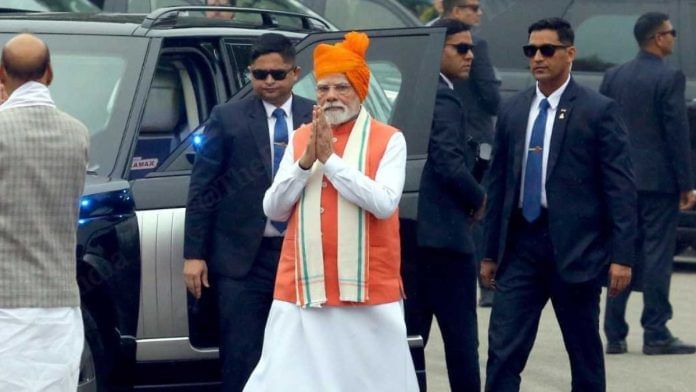New Delhi: In his Independence Day address from the Red Fort, Prime Minister Narendra Modi Friday announced what he described as a “double Diwali” gift for Indians—sweeping reforms to the Goods and Services Tax (GST).
“I am going to give you a great gift on Diwali,” he said, adding that while the past eight years saw major reforms under GST, simplifying taxes and reducing burdens, the time has now come for a comprehensive review. “The government has already held consultations with a high-level committee as well as state governments, and the new next generation GST reforms will significantly lower taxes on daily-use items.”
He also highlighted that micro, small and medium enterprises (MSMEs) will be among the biggest beneficiaries, which in turn will help the broader economy.
The announcement comes ahead of the 56th GST Council meeting, scheduled for later this month, where rate rationalisation is expected to be on the agenda.
In a statement Friday, the Ministry of Finance outlined the Centre’s proposal for “next-generation GST reforms” anchored on three pillars—structural reforms, rate rationalisation and ease of living.
Prime Minister Shri @narendramodi, on the occasion of 79th Independence Day, highlighted how Goods and Services Tax (GST), implemented in 2017, is a significant reform which has benefited the nation.
The Prime Minister underscored the importance of the next generation of reforms…
— Ministry of Finance (@FinMinIndia) August 15, 2025
“Key areas identified for next-generation reforms include the rationalisation of tax rates to benefit all sections of society, especially the common man, women, students, middle class, and farmers,” the ministry said.
Structural reforms will target inverted duty corrections, classification disputes, and provide long-term rate stability. Rate rationalisation will focus on reducing taxes on essential and aspirational goods, moving towards fewer tax slabs, and using fiscal space created by the end of compensation cess. The ease of living pillar emphasises simpler registrations, pre-filled returns and faster refunds, particularly for small businesses and exporters.
The ministry added that the proposals had been shared with the Group of Ministers (GoM) constituted by the GST Council, and would be deliberated in the coming weeks. Stressing on cooperative federalism, it added that the Centre remained committed to building consensus with the states. “The GST Council, when it meets next, will deliberate on the recommendations of the GoM, and every effort will be made to facilitate early implementation so that the intended benefits are substantially realised within the current financial year,” the statement read.
One of the most significant changes could reportedly be the abolition of the 12 percent GST slab, with items moved either to the 5 percent or 18 percent brackets. Goods, such as packaged food, beverages, apparel, and hotel services are likely to be impacted, directly lowering consumer costs during the festive season.
The debate over this slab has also intensified in India’s dairy industry, which, on 1 August, urged policymakers to correct what it called a glaring disparity—while essential dairy products, like milk, curd, lassi, and buttermilk are taxed at 5 percent, ghee and butter continue to attract 12 percent. Producers have warned that this not only raises affordability concerns for households, but also distorts the market and undermines consumer trust.
Introduced on 1 July, 2017, GST was billed as India’s biggest tax reform. However, its complex structure has long drawn calls for rationalisation. Modi, in his speech Friday, underlined that the reforms this Diwali would be both symbolic and substantive, designed to ease daily living and boost consumption.
(Edited by Mannat Chugh)
Also Read: Be ‘atmanirbhar’ and go ‘swadeshi’: PM Modi’s clarion call to nation on 79th Independence Day






